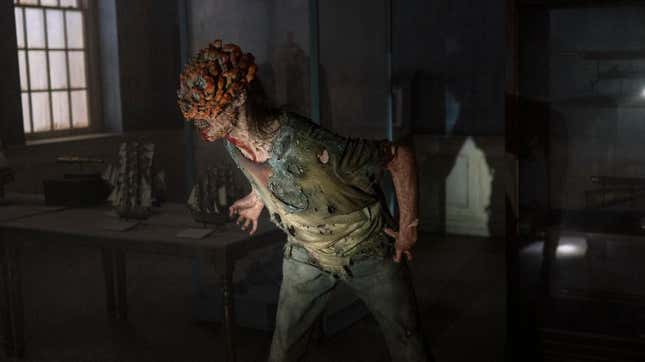Adaptogenic Mushrooms Trigger a Zombie Apocalypse in ‘The Last of Us.’ Should We Be Concerned?
The Goop-y wellness hack was having a massive moment until HBO made it the villain of its latest hit show.
EntertainmentTV

HBO’s adaptation of The Last of Us premiered last week, and for the wellness hags among us who never played the astronomically best-selling video game, it brought an unsettling surprise. The season opener leads with a mid-century scientist explaining why it isn’t viral or bacterial pandemics mankind should fear (covid, a mere glint in his eye), but fungal. Fungi, he says, don’t parasitize humans because our body temperatures aren’t favorable to them—yet. Should the planet warm a few degrees, he foreshadows gloomily, that could all change.
He name drops one fungus in particular, and if you’ve ever sipped on a functional seltzer or stirred some Moon Juice powder into your smoothie, you might recognize it. The cordyceps mushroom is the villain of HBO’s show, and it’s not spreading via the Whole Foods supplements aisle. In The Last of Us, ghastly tendrils of the stuff grow out of the mouths of infected zombie-like people, who violently flail about in search of hosts to bite, or kiss to death, thus spreading the fungi. Is it fictional? Sure. Does it make me think twice about pounding adaptogenic lattes that, ironically, claim to decrease my mortality? Absolutely.
Mushrooms are having a banner decade. Everyone and their great aunt is microdosing psilocybin. Bjork and Margo Price both have mushroom albums. You can’t swing a reusable tote in the health food store without knocking over a grow-your-own porcini kit. And, in certain circles, words like chaga, lion’s mane, and reishi are becoming as familiar as Oatly.
But The Last of Us buzz has people spooked, asking different versions of “Will my creminis make me eat my friends?” I woke up the morning after watching the first episode and Googled “Should we stop eating cordyceps?” I got no results, and had a lot more questions. How could something that supposedly helps us live longer also turn us into the undead? Is the wellness industry giving pathogenic fungi a leg up by cultivating them en masse? And where is Big Mushroom in all this? (You know the Got Milk people wouldn’t stand for an HBO show about a dairy-fueled apocalypse.) Neither the mushroom lobby nor Moon Juice responded to my requests for comment, which left me no choice but to dig into the science.

If the idea of a zombifying fungus sounds vaguely familiar, then you might have been getting stoned and watching Planet Earth back in 2012, when David Attenborough first terrified the world with the revelation of mind-control mushrooms. Over a droning string waltz, Attenborough explained how cordyceps infects ants and manipulates them into climbing to a high branch, sprouting a mushroom out their backs, and making it rain infectious spores on all the unsuspecting ants below. The fungus does this by bypassing ants’ brains entirely, controlling their muscles in a coup reminiscent of Robocop’s fourth prime directive—and The Last of Us is effectively saying we’re next. But are we?
“Cordyceps are mostly all insect pathogens, and although insects are animals, they’re pretty far away from us,” Matt Kasson, a mycologist from West Virginia University who studies, get this, zombie cicadas, told me. “The likelihood of something jumping from an insect to a human is pretty low,” he added. (The show suggests that the fungus leapt to humans from flour in an Indonesian grain mill.)
Jason Stajich, a professor of plant pathology at University of California, Riverside, agreed with Kasson: “If you’re gonna get inside the [human] body and do stuff, you’ve got to be able to survive at 37 degrees celsius and, of course, evade the immune system.” (Show me that video game.) What our immune systems and body temps don’t kill, our stomach acid will—and if you’re wondering how something that can’t even live in our bodies could possibly be good for them, ditto, but the scientists assured me even dead mushrooms have health benefits.-

-

-

-

-

-

-

-

-

-

-

-

-

-

-

-

-

-

-

-

-

-

-

-

-

-

-

-

-

-

-

-

-

-

-

-

-

-

-

-








































